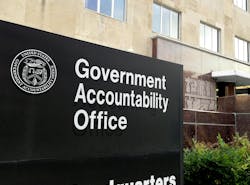GAO: US Interior needs to improve royalty collection from oil, gas production on federal lands
The US Interior Department should take additional steps to ensure oil and gas companies pay royalties they owe for production on federal lands, the US Government Accountability Office (GAO) said Sept. 6.
From 2012-22, companies paid the US government $74 billion in royalties, with Interior Department's efforts to go after violators resulting in about $600 million in additional payments in the period, the government watchdog said.
But the agency needs to improve those results, and GAO offered 14 recommendations to boost Interior’s Office of Natural Resources Revenue (ONRR)’s performance. Interior’s management of oil and gas has been on the agency’s High-Risk List, used to identify and help resolve serious government weaknesses, since 2011.
ONRR last estimated a royalty gap–the difference between the payments ONRR collects and what it should collect–of about $100 million for both 2010 and 2011.
While ONRR staff recommended improving the model to continue estimating the royalty gap, it failed to continue this effort after 2011, GAO said. More recent royalty-gap estimates are unavailable.
“GAO attempted to estimate a royalty gap for more recent years using a different model but was unable to do so due to limitations with ONRR's data,” GAO said. “Rigorous and improved estimates of its royalty gap could help ONRR enhance its decision-making and strategic planning of compliance efforts on an ongoing basis.”
GAO said ONRR has made progress developing new risk models for selecting cases for compliance. But “incomplete data and resource challenges have impeded ONRR's ability to analyze its compliance data,” GAO said, adding that ONRR is developing its own risk models for case selection, which should increase its capacity to analyze data.
GAO made 14 recommendations, including that ONRR improve the completeness of its compliance data, assess its human capital needs related to its data and data systems, and periodically estimate a royalty gap of adequate rigor.
It also recommended that the ONRR director assess the benefits incorporating “randomly selected compliance activities” into its workplans, including the resources necessary to conduct the appropriate number of random compliance activities, to validate its risk models.
Interior concurred with GAO's recommendations.
About the Author
Cathy Landry
Washington Correspondent
Cathy Landry has worked over 20 years as a journalist, including 17 years as an energy reporter with Platts News Service (now S&P Global) in Washington and London.
She has served as a wire-service reporter, general news and sports reporter for local newspapers and a feature writer for association and company publications.
Cathy has deep public policy experience, having worked 15 years in Washington energy circles.
She earned a master’s degree in government from The Johns Hopkins University and studied newspaper journalism and psychology at Syracuse University.
